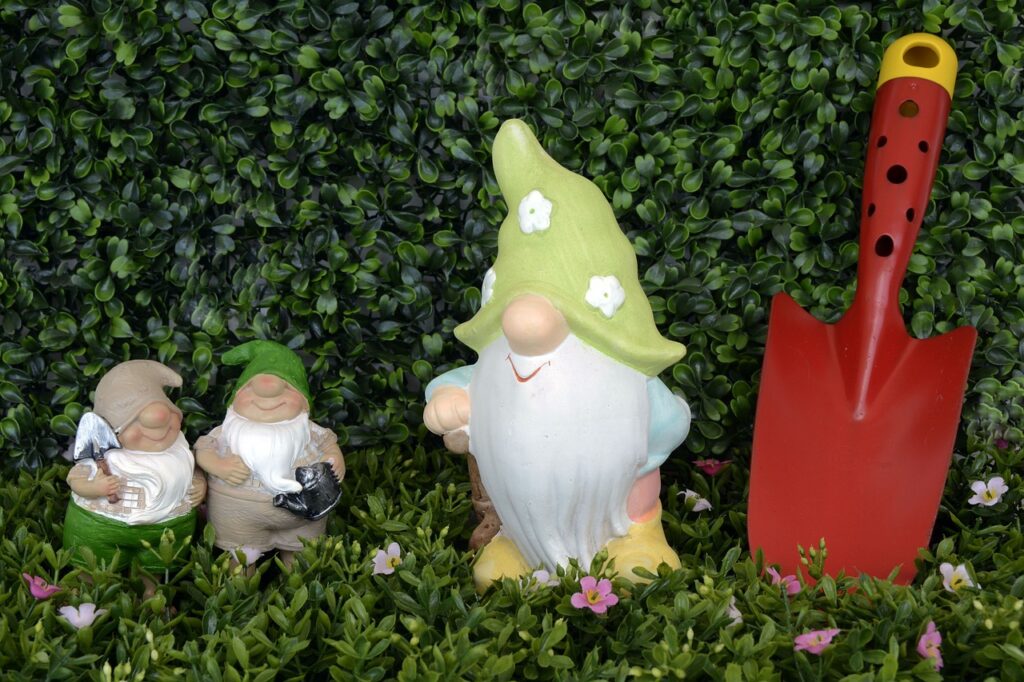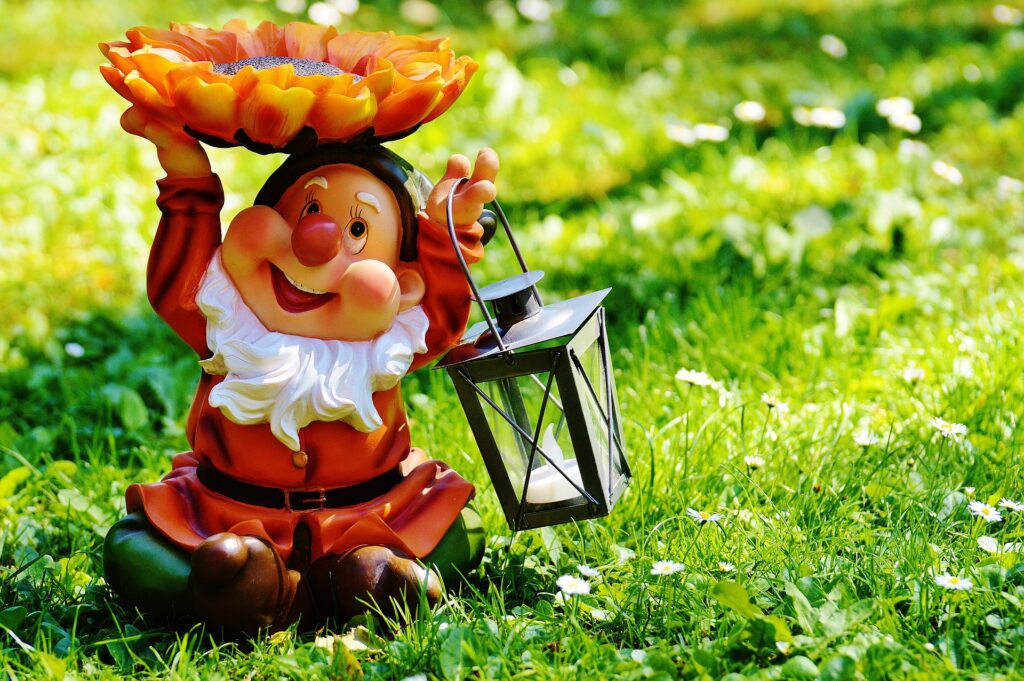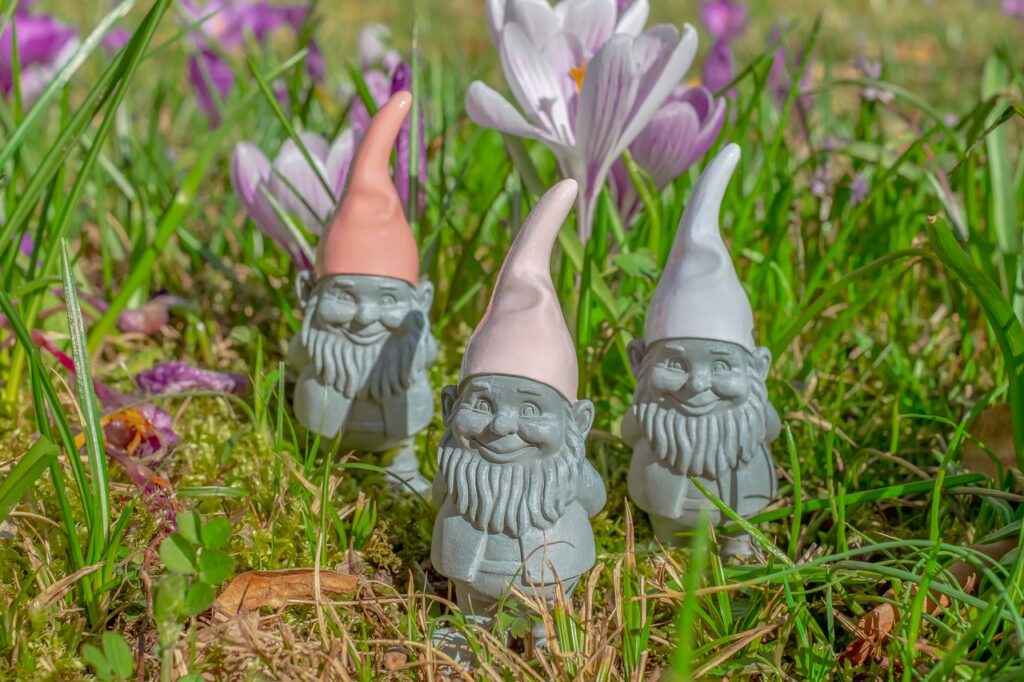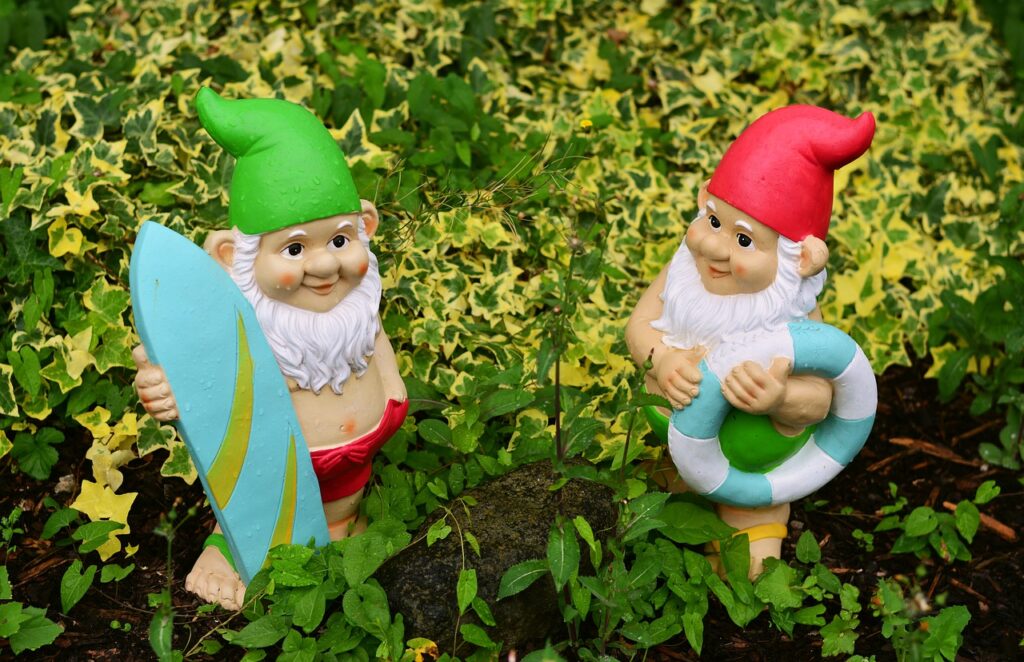According to ancient Rome, small stone statues depicting the Greek-Roman god of prosperity, Priapus, were frequently placed in Roman gardens. During the Renaissance, Swiss chemist Para Paracelsus first described gnomes as “magical creatures” of “two distant heights that refuse to mix with humans.” Also, during this period, 1 m high tall, usually pale painted stones were abundantly placed in the gardens of the “crazy” rich. Among the figures represented was Gobbi. In particular, Jack Collett produced 21 editions of Gobbi engraved and printed in 1616.
History Of Garden Gnomes: Pre-Twentieth Century
By the late 1700s, gnomes-like statues made of wood or porcelain knows as “gnomes.” It became home decor. The area around the city of Bryans in Switzerland. It was famous for the production of wooden house dwarfs. In Germany, these garden statues associate with their traditional myths and superstitions about the “small village” or dwarfs they believed helped in mining and farming. The Dresden Company Bahar & Maresh had ceramic dwarf or “small village” statues. It is as small as 1841, and although they competed to claim, some of the loans were borrowing by Bahar Maresh with the first garden dwarf.
In less than ten years, dwarf statues have spread throughout Germany from Saxony and Thuringia to France. In 1847, Sir Charles Isham brought twenty-one terracotta gnomes made in Germany to Britain by Philip Greibel. In English and buried in the gardens of Isham’s home in Lamport Hall, Northamptonshire. Named the “Lampy,” the group’s only surviving gnomes are on display at Lamport Hall and are insuring for $1 Million. With the spread of gnomes production throughout Germany, many other large and small manufacturers are entering and leaving the business. Horticultural gnomes spread to other parts of Europe in the 1840s. And it was trendy in France and Britain as well. The term “garden gnome” may begin with the word “Gnomen-Figuren” (miniature) used in early German catalogs.
History Of Garden Gnomes: Twentieth Century
Sir Frank Crisp, the United Kingdom’s second-largest gnomes collection owner, opened the Flander Park Henley on Thames Estate to the public at least once a week from 1910-1919. It is the first time that gardeners and visitors from all over the world have seen garden gnomes.
The popularity of German gnomes declined after World War I but re-emerged in the 1930s after Disney’s animated films Snow White and the Seven Dwarfs. Tom Major-Ball, the father of former British Prime Minister John Major, was the most prominent garden gnomes for his company, Major. World War II and the year after that were also difficult for the industry. And many manufacturers abandoned it at the time. In the 1970s, garden gnomes became more popular by creating ridiculous gnomes. Traveling gnomes and garden gnomes became popular in the 1990s. They sometimes became national news, where people stole garden gnomes from the grass of an unknown person and sent photos of the owner as a practical joke before returning them.
History Of Garden Gnomes: Twenty-First Century
Descendants of Philip Greibel still produce horticultural gnomes in Germany. As of 2008, there are an estimated 25 million home garden gnomes in Germany.

The Look of Gnomes
The gnomes are not usually describing in the stories. Still, the garden gnomes produced worldwide have the same general appearance and typically wear long, white beards, red hats, and plainclothes. Female gnomes have long hair, the same hat, and simple dress and look like witches. These days, gnomes can find in various clothing and configurations. Also, it is increasing the resentment felt by many who dislike these creatures. There are sunscreen gnomes, bathing gnomes, and gnomes invisible to visitors. These are very different from the gnomes’ traditional intentions in the garden. But if they smile at you, they serve their purpose and are more fun than conventional garden figurines.
Also Read: Nice Garden Furniture & Buying Guide.













![Gardening Knee Pads Guide [2024] – Importance, Major Factors & Alternatives Explained Everything You Need to Know about Gardening Knee Pads](https://tipbeing.com/wp-content/uploads/2021/07/Gardening-Knee-Pads-–-Everything-You-Need-to-Know-270x180.jpg)
1 Comment
Pingback: Garden Netting Tips and Advantages Every Planter Should Know | Tip Being 2021